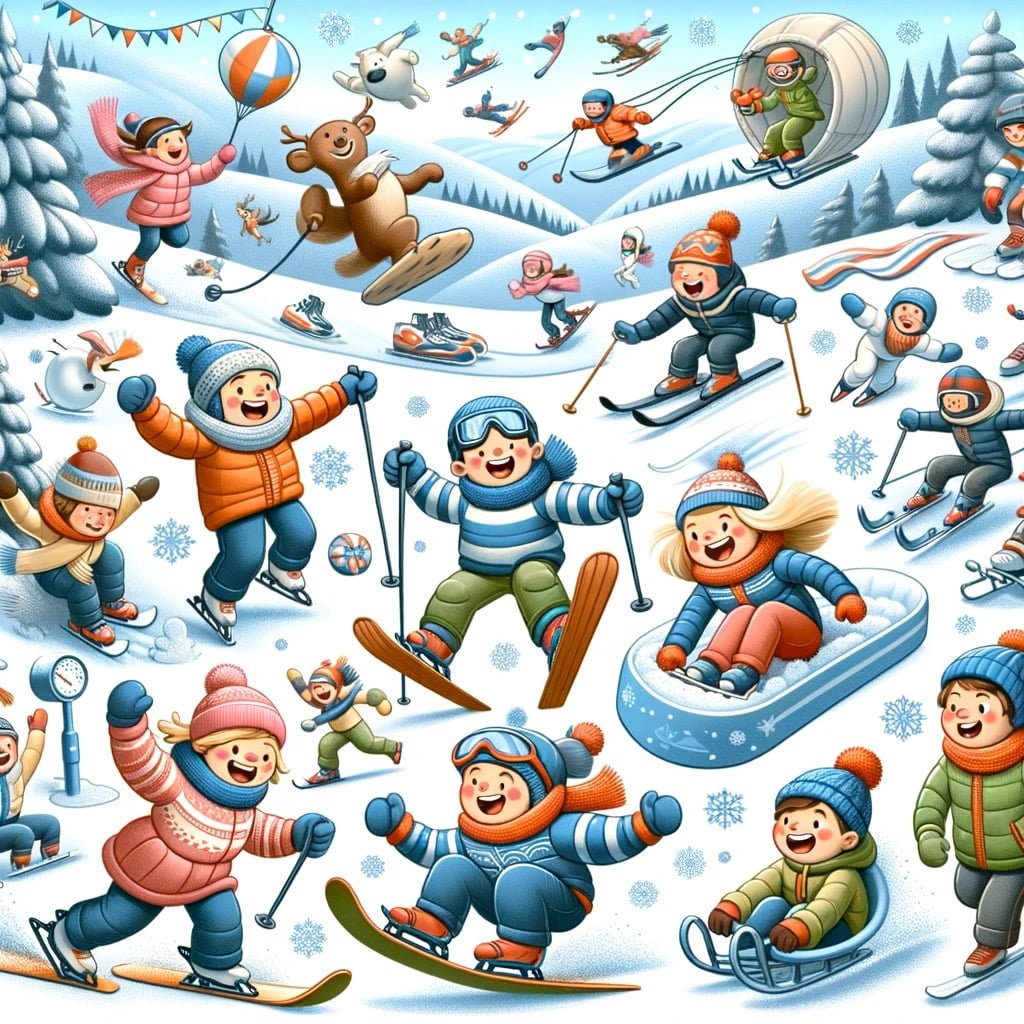Welcome to a fascinating journey through the enchanting world of Autumn Facts For Kids! As an expert on nature and science, I am thrilled to share with you some delightful and educational insights into the wonders of the autumn season. From the vibrant colors of changing leaves to the fascinating behaviors of migrating animals, autumn is a time of transformation and discovery in the natural world. Join me as we delve into the science behind the magic of autumn and explore fun facts that will captivate and inspire young minds. Let’s embark on an adventure of learning and exploration as we uncover the secrets of autumn together!
Autumn Facts For Kids
1. The Colors of Autumn Leaves

For younger kids: In the fall, leaves change into beautiful red, orange, and yellow colors.
For older kids: During Autumn, the leaves of deciduous trees stop producing chlorophyll, allowing the vivid colors of carotenes and anthocyanins to be revealed.
Detailed explanation:As we enter the fall season, one of the most iconic sights is the changing colors of autumn leaves. This natural phenomenon occurs as the days get shorter and cooler, causing the chlorophyll in the leaves to break down. Chlorophyll is the pigment responsible for the green color in leaves during the spring and summer months.
As the chlorophyll breaks down, other pigments in the leaves become more visible. These pigments include carotenoids, which produce yellow and orange hues, and anthocyanins, which produce red and purple hues. The varying levels of these pigments in different tree species and even within the same species are what give us the beautiful array of colors we see in the fall.
Autumn colors can also be influenced by environmental factors such as temperature, sunlight, and soil moisture. Warmer temperatures and sunny days can result in more vibrant colors, while a lack of sunlight or early frost can cause leaves to turn brown and fall off prematurely.
For kids, learning about the colors of autumn leaves can be a fun and educational experience. They can go on nature walks to observe the different colors, collect leaves to create colorful art projects, or even conduct simple experiments to understand the science behind the changing colors. By engaging with nature in this way, children can develop a deeper appreciation for the natural world around them. So next time you see a red, yellow, or orange leaf falling from a tree, remember the fascinating autumn facts for kids that explain this beautiful seasonal transformation.
Autumn Facts For Kids
2. Animals Prepare for Winter
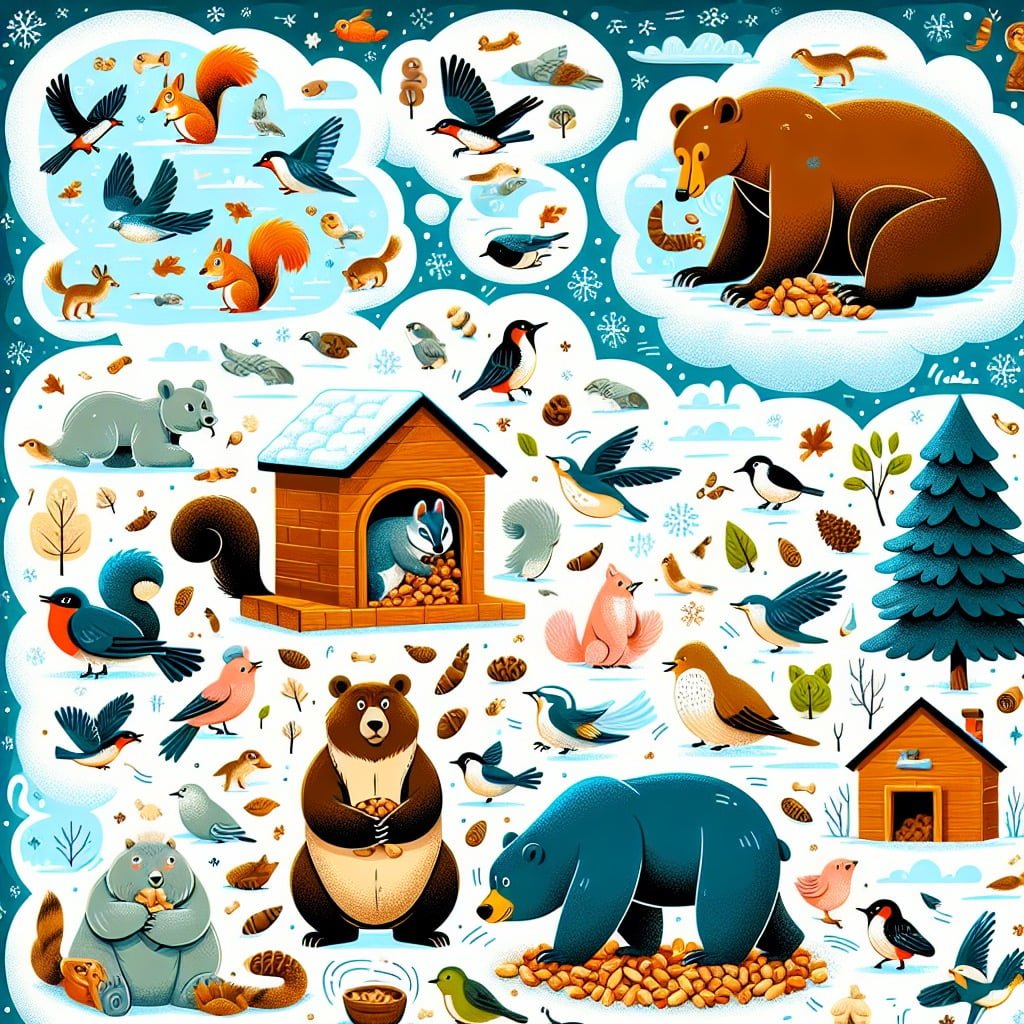
For younger kids: Many animals start gathering food and finding cozy homes for the colder months.
For older kids: As the days grow shorter and temperatures drop, animals start to prepare for winter by migrating, hibernating, or growing thick coats to keep warm.
Detailed explanation:As the leaves change colors and the air becomes chillier, animals across the globe are busy preparing for winter. These Autumn Facts For Kids are not just fun to learn about, but they also shed light on the incredible ways in which animals adapt to survive the colder months.
One fascinating strategy animals use to prepare for winter is called hibernation. During this period, animals like bears, groundhogs, and bats enter a state of deep sleep to conserve energy and survive the harsh conditions. By lowering their body temperature and slowing their metabolism, these animals can go for weeks or even months without food or water. This incredible adaptation allows them to make it through the winter when resources are scarce.
Another interesting Autumn Facts For Kids is migration. Many birds, insects, and even some mammals travel great distances to escape the cold and find more abundant food sources. For example, monarch butterflies travel thousands of miles from North America to central Mexico to avoid freezing temperatures. Birds like geese and swans fly south for the winter in search of warmer climates and ample food supplies.
Animals also engage in activities like storing food, growing thicker fur or feathers, and even changing their behavior to survive the winter. Squirrels gather and bury nuts to have a food source during the colder months, while some animals molt and regrow thicker coats to stay warm. By understanding these Autumn Facts For Kids, we can appreciate the immense resilience and adaptability of the animal kingdom as they face the challenges of winter.
Autumn Facts For Kids
3. The Harvest Moon Appears

For younger kids: In Autumn, there’s a special full moon called the Harvest Moon!
For older kids: The Harvest Moon is the full moon that occurs nearest to the autumnal equinox, and it’s known for its bright, orange color and early rise time.
Detailed explanation:Autumn Facts For Kids are often filled with wonder and excitement, and one of the most iconic events of the fall season is the appearance of the Harvest Moon. The Harvest Moon is the full moon that occurs closest to the autumnal equinox, typically in September or October. This phenomenon has been celebrated for centuries in various cultures around the world, and for good reason.
The Harvest Moon gets its name from the fact that it provided extra light during the harvest season, allowing farmers to work late into the night to bring in their crops. This extra light is due to the moon’s unique orbit, which causes it to rise earlier than usual for several nights in a row around the time of the full moon. This prolonged period of brightness makes the Harvest Moon appear larger and more orange in color, creating a breathtaking sight in the night sky.
For kids, witnessing the Harvest Moon can be a magical experience. They can learn about the science behind this phenomenon, including the role of the moon’s orbit in its unique appearance during the fall season. Children can also participate in traditional Harvest Moon celebrations, such as moon-viewing parties or storytelling events that highlight the significance of this special moon phase.
Overall, the Harvest Moon is a captivating Autumn Facts For Kids that inspires awe and curiosity about the world around us. It serves as a reminder of the beauty and wonder of nature, and provides a perfect opportunity for kids to engage with science and culture in a fun and memorable way.
Autumn Facts For Kids
4. Autumn Equinox and Daylight Hours
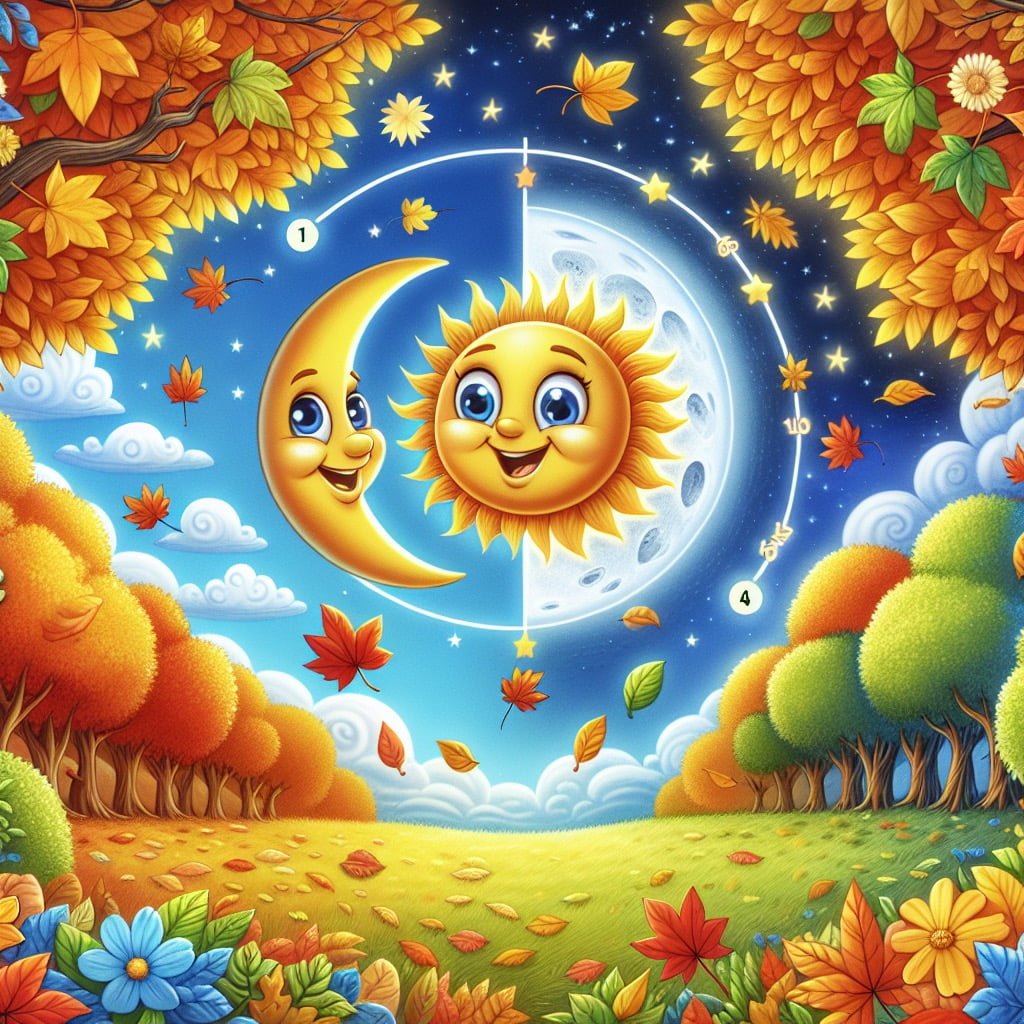
For younger kids: The Autumn Equinox marks the official start of fall when days and nights are almost the same length.
For older kids: The Autumn Equinox signifies the moment when the sun crosses the celestial equator, resulting in nearly equal amounts of daylight and darkness across the world.
Detailed explanation:As we approach the Autumn Equinox, which typically falls around September 22nd or 23rd in the Northern Hemisphere, we start to see a noticeable shift in daylight hours. This phenomenon marks the official start of autumn and occurs when the sun crosses the celestial equator, resulting in nearly equal day and night lengths.
For kids, understanding Autumn Equinox and the changing daylight hours can be a fascinating lesson in the science of our planet. As the Earth orbits around the sun, its axis is tilted, causing different parts of the world to receive varying amounts of sunlight throughout the year. During the autumn equinox, the tilt of the Earth’s axis is such that the sun is directly above the equator, creating equal lengths of day and night.
This shift in daylight hours is a direct result of the changing angle of the sun’s rays as the Earth moves around its orbit. As we move towards winter, the Northern Hemisphere will begin to tilt away from the sun, resulting in shorter days and longer nights. This transition not only marks the change in seasons but also has significant impacts on our climate, wildlife, and natural ecosystems.
By observing and learning about Autumn Equinox and its effects on daylight hours, kids can gain a greater appreciation for the natural world around them. It’s a reminder of the Earth’s constant motion and the intricacies of our planet’s relationship with the sun. So next time you notice the days getting shorter and the nights growing longer, remember the autumn facts for kids and the science behind this seasonal shift.
Autumn Facts For Kids
5. Pumpkin Carving and Jack-o’-Lanterns
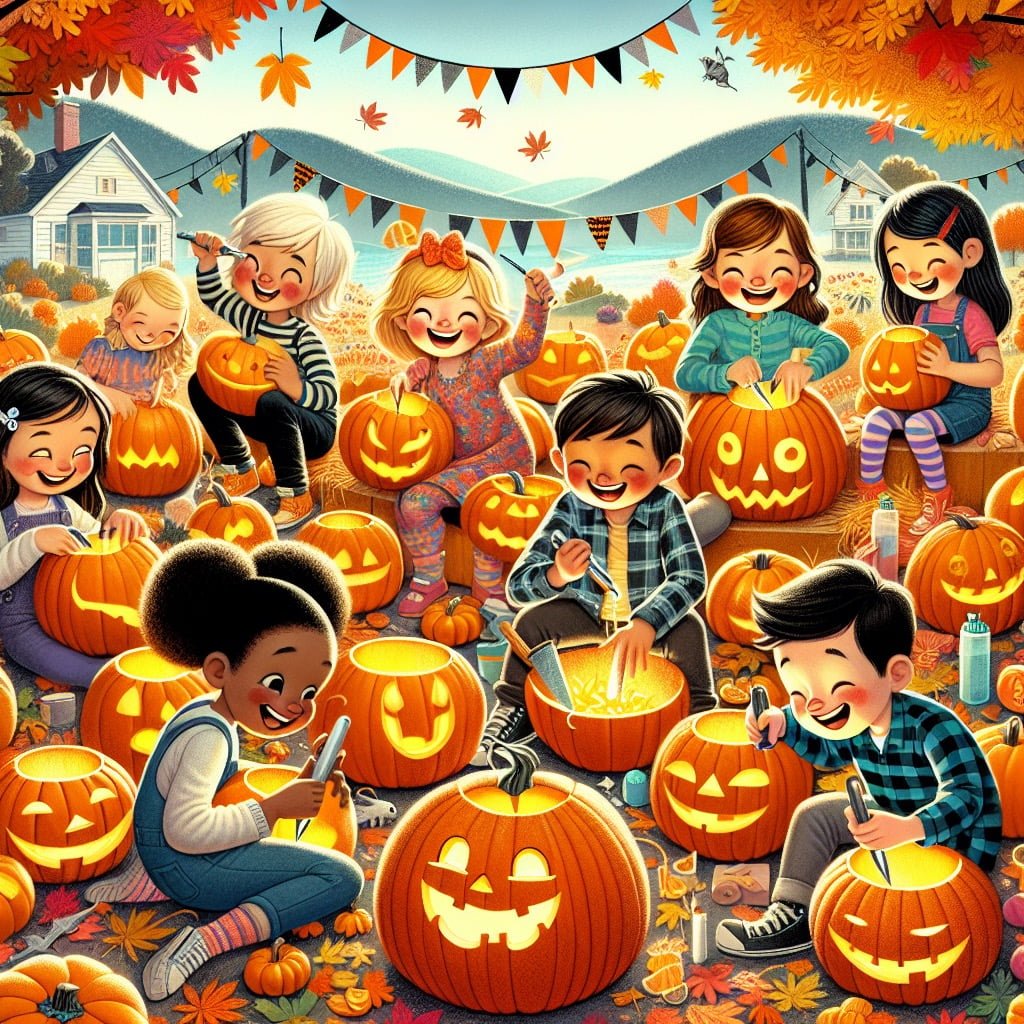
For younger kids: People enjoy carving funny faces on pumpkins for Halloween!
For older kids: The tradition of carving pumpkins into jack-o’-lanterns began centuries ago, originally using turnips or potatoes instead of pumpkins.
Detailed explanation:As we approach the autumn season, one popular activity that many kids look forward to is pumpkin carving to create Jack-o’-Lanterns. This tradition dates back centuries to Ireland, where turnips were originally used instead of pumpkins. The practice of carving scary faces into vegetables was believed to ward off evil spirits on All Hallow’s Eve. When Irish immigrants brought this tradition to America, they found that pumpkins were more readily available and easier to carve, thus the Jack-o’-Lanterns we know today were born.
Pumpkin carving is a fun and creative way for kids to celebrate Halloween and the fall season. It allows them to express their creativity by designing their own unique Jack-o’-Lanterns. From spooky faces to intricate designs, the possibilities are endless. In addition to being a festive decoration, Jack-o’-Lanterns also serve a practical purpose of lighting up the night during trick-or-treating.
For kids, pumpkin carving can also be a great learning experience. They can practice their fine motor skills by using tools to carve out the pumpkin, while also learning about the history and origins of this autumn tradition. It provides an opportunity for parents and children to bond over a shared activity, creating lasting memories together.
Overall, pumpkin carving and Jack-o’-Lanterns are classic autumn activities that bring joy and excitement to kids of all ages. It is a tradition that combines creativity, history, and fun, making it a beloved pastime for many families during the fall season.
Autumn Facts For Kids
6. Autumnal Foods and Harvest Festivals

For younger kids: We celebrate with delicious apples, corn, and other yummy foods during Autumn!
For older kids: Autumn is a time for bountiful harvests, with festivals and gatherings to celebrate the abundance of fruits and vegetables being collected from the fields.
Detailed explanation:As the leaves change colors and the weather starts to cool down, autumn is a time of transition and abundance when it comes to food. From hearty root vegetables like squash and pumpkins to crisp apples and juicy pears, autumn is the perfect time to savor the flavors of the season.
One of the most exciting aspects of autumn for kids is the abundance of harvest festivals that take place during this time of year. These festivals celebrate the bounty of the season and often feature fun activities like apple picking, corn mazes, and pumpkin carving. Kids can learn about where their food comes from and how it is grown, fostering a greater appreciation for the hard work that goes into producing the food we eat.
Another fun way to celebrate autumnal foods is by incorporating them into delicious recipes that kids can help to prepare. Whether it’s baking a pumpkin pie, making applesauce, or roasting vegetables, getting kids involved in the kitchen is a great way to teach them about healthy eating habits and where their food comes from.
In addition to being delicious, many autumnal foods are also packed with nutrients that are beneficial for growing bodies. For example, pumpkins are rich in vitamin A, which is important for maintaining healthy vision, while apples are high in fiber, which aids in digestion. By incorporating a variety of autumnal foods into their diet, kids can ensure that they are getting the vitamins and minerals they need to stay healthy and strong.
Overall, autumn is a time of delicious foods, fun festivals, and valuable learning experiences for kids. By taking advantage of the bounty of the season, children can develop a greater appreciation for food and where it comes from, setting them up for a lifetime of healthy eating habits.
Autumn Facts For Kids
7. Migrating Birds and Their Long Journeys

For younger kids: Birds travel to warmer places as it gets colder here.
For older kids: Many bird species embark on incredible migration journeys, traveling thousands of miles to reach warmer climates and find food during the cold months.
Detailed explanation:As autumn approaches, one of the most fascinating natural phenomena that occurs is the migration of birds. This is a truly remarkable event, as many species of birds travel thousands of miles to reach their wintering grounds, often crossing continents and oceans in the process. These long journeys are essential for their survival, as they allow the birds to escape the harsh winter conditions and find food in areas with more favorable climates.
One of the most impressive examples of bird migration is the journey of the Arctic Tern, which holds the record for the longest migration of any bird. These incredible creatures travel from their breeding grounds in the Arctic to their wintering grounds in Antarctica, covering a distance of over 50,000 miles round trip. This journey is truly a testament to the amazing abilities of these birds, as they navigate across vast expanses of ocean, facing numerous challenges along the way.
The migration of birds is driven by a combination of instinct and environmental cues, such as changes in day length and temperature. Birds are able to navigate using a variety of methods, including landmarks, the sun and stars, and even the Earth’s magnetic field. This remarkable ability allows them to navigate with precision and accuracy, ensuring that they reach their destination safely.
For children, learning about the migration of birds can be a fascinating and educational experience. It can help them understand the importance of conservation and the interconnectedness of the natural world. By observing and learning about these autumn facts for kids, they can develop a deeper appreciation for the wonders of nature and the incredible feats that birds are capable of achieving.
Autumn Facts For Kids
8. Autumn is the Season of Animal Breeding

For younger kids: Some animals have babies in the fall before it gets too cold.
For older kids: Autumn is an essential time for many animals to breed, ensuring their young are born in spring so they have the best chance of survival.
Detailed explanation:Autumn Facts For Kids are always intriguing, and one interesting fact about this season is that it is the season of animal breeding. As the weather begins to cool down and the days become shorter, many animals instinctively know that it is time to reproduce. This is because in many parts of the world, autumn is the time when food is plentiful and the conditions are just right for raising young.
One reason why autumn is the season of animal breeding is because many animals need to time their pregnancies so that their young are born in the spring when food is abundant. By mating in the autumn, animals ensure that their offspring will have the best chance of survival. Additionally, the cooler temperatures in autumn can also be beneficial for pregnant animals, as they do not have to worry about overheating.
In some species, such as deer and elk, autumn is also the time when males compete for the attention of females. This often involves elaborate displays of dominance and strength, such as locking antlers or engaging in vocalizations. These behaviors are all part of the mating ritual, which helps ensure that only the strongest and fittest males pass on their genes to the next generation.
Overall, autumn is a crucial time for many animals in terms of reproduction. It is a time of abundance and opportunity, where animals take advantage of the favorable conditions to ensure the survival of their species. So next time you see animals behaving differently in the fall, remember that it is all a part of the fascinating cycle of life in nature.
Autumn Facts For Kids
9. The Reappearance of Fog and Mists
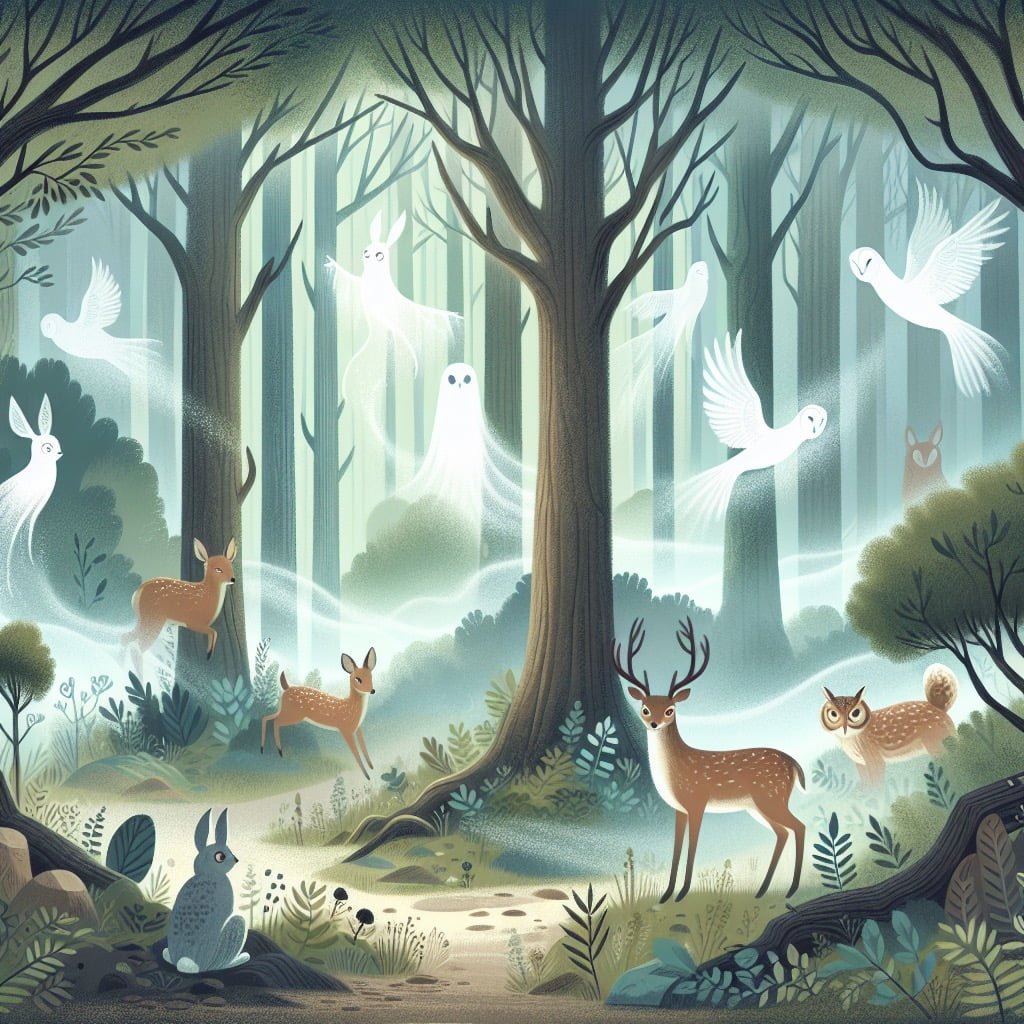
For younger kids: Fog and mist become more common in the mornings and evenings during Autumn.
For older kids: Autumn brings about an increase in fog and mist, as the cooler air can’t hold as much moisture, causing it to condense and create hazy conditions.
Detailed explanation:As the season transitions from summer to autumn, one of the most noticeable changes in the weather is the reappearance of fog and mists. This phenomenon is a result of the cooling temperatures during the autumn months, which causes moisture in the air to condense and form small water droplets suspended in the atmosphere.
Fog and mists are essentially the same thing – tiny water droplets that reduce visibility near the Earth’s surface. However, fog is denser than mist, with visibility reduced to less than 1 kilometer. Mist, on the other hand, allows for visibility between 1 and 2 kilometers. Both fog and mist can create a magical and mysterious atmosphere, particularly in the early mornings or late evenings, when the sun’s rays can create stunning visual effects as they filter through the water droplets.
There are different types of fog that can form during autumn, including radiation fog, advection fog, and upslope fog. Radiation fog typically forms on clear nights when the ground cools rapidly, causing the air above it to cool and reach its dew point, leading to fog formation. Advection fog, on the other hand, occurs when warm, moist air moves over a cooler surface and cools to its dew point, creating fog. Upslope fog forms when moist air is forced to rise over elevated terrain, causing it to cool and condense into fog.
For kids, autumn fog and mists can be a fascinating natural phenomenon to observe and learn about. It’s a great opportunity to teach them about how weather patterns change with the seasons and the science behind fog formation. Plus, it can inspire a sense of wonder and curiosity about the world around them.
Autumn Facts For Kids
10. Autumn is the Perfect Time for Stargazing

For younger kids: You can see many bright stars in the clear Autumn sky!
For older kids: With the crisp, clear nights of Autumn, it’s an ideal time for stargazing, as the skies are often free of the haze that can obscure stars in other seasons.
Detailed explanation:Autumn is the perfect time for stargazing, as the nights grow longer and clearer, making it easier to see the stars in all their brilliance. This season is ideal for kids who are interested in astronomy, as they can witness some amazing celestial events right from their own backyard.
One of the reasons why autumn is such a great time for stargazing is that the air is usually drier and crisper, leading to clearer skies with less humidity and fewer clouds. This means that there is less atmospheric distortion, allowing for better visibility of the stars and other celestial objects.
Another reason why autumn is perfect for stargazing is that the Earth’s tilt in relation to the sun creates longer nights during this time of year, giving stargazers more time to observe the night sky. This means that kids can stay up later without having to worry about school the next day, making it easier for them to indulge in their passion for astronomy.
In addition, autumn is when some spectacular meteor showers occur, such as the Orionid meteor shower in late October. Kids can stay up late to watch these shooting stars streak across the sky, providing them with a truly magical experience.
Overall, autumn is the perfect time for kids to engage in stargazing and learn more about the wonders of the universe. So grab a blanket, head outside, and explore the night sky this autumn!
Did You Know?
Autumn is also known as “fall” because it’s the season when leaves fall from the trees, and the days fall shorter and nights become longer.
Summary of Autumn Facts For Kids
As an expert on the topic of autumn, I am thrilled to share with you a fascinating exploration of fun facts about this magical season specifically curated for kids. Autumn is a time of wonder and beauty, and delving deeper into the science behind the changing leaves and animal behaviors can ignite curiosity and a love for nature in children. By understanding the reasons behind the vibrant colors of the leaves and the preparations animals make for winter, kids can develop a deeper appreciation for the natural world around them.
Learning about autumn facts for kids not only educates them on the cycle of seasons but also provides valuable lessons on adaptation, conservation, and the interconnectedness of all living things. By engaging in activities like leaf collecting, nature walks, and pumpkin carving, children can actively participate in the magic of autumn and create lasting memories that will stay with them for a lifetime.
So, join me in exploring the beauty and wonder of autumn through these engaging and educational fun facts for kids. By reading more about the marvels of this season, children can develop a greater understanding and connection to the world they live in, fostering a sense of curiosity, respect, and admiration for the natural world. Let’s embrace the enchanting moments of autumn and celebrate the beauty and magic that surrounds us during this special time of year.
Sources and additional information for Autumn Facts For Kids
WikipediaBritannicaHistory of Holidays (History.com)Time and Date HolidaysThe Old Farmer’s Almanac – SeasonsEarthSky – Earth’s SeasonsNational Geographic – The Science of WinterHoliday InsightsSeasons of the YearOffice HolidaysWhy Christmas?History ChannelTime and DateHallmark ChannelBritannicaWikipediaThe Spruce CraftsMartha StewartGood Housekeeping

